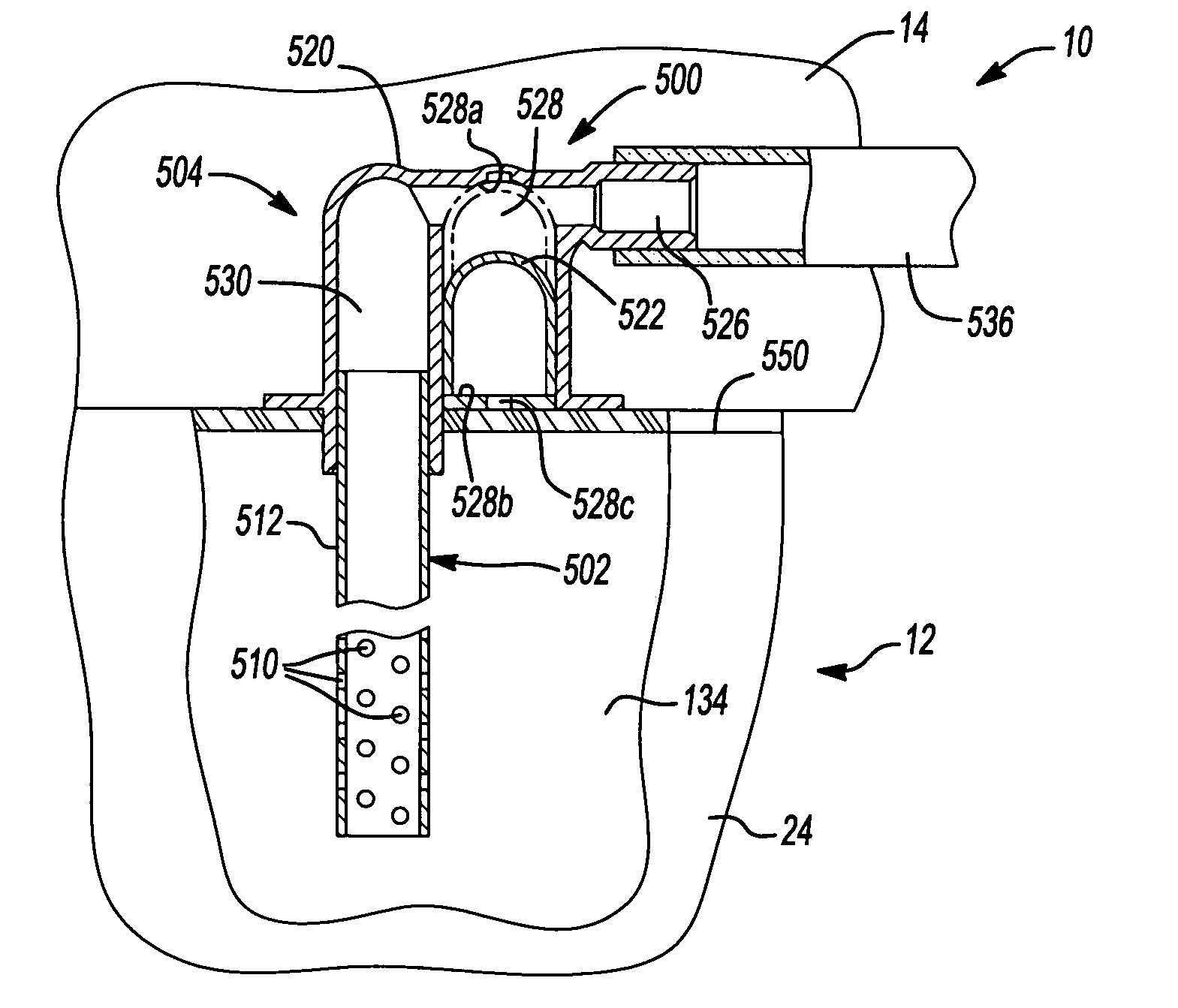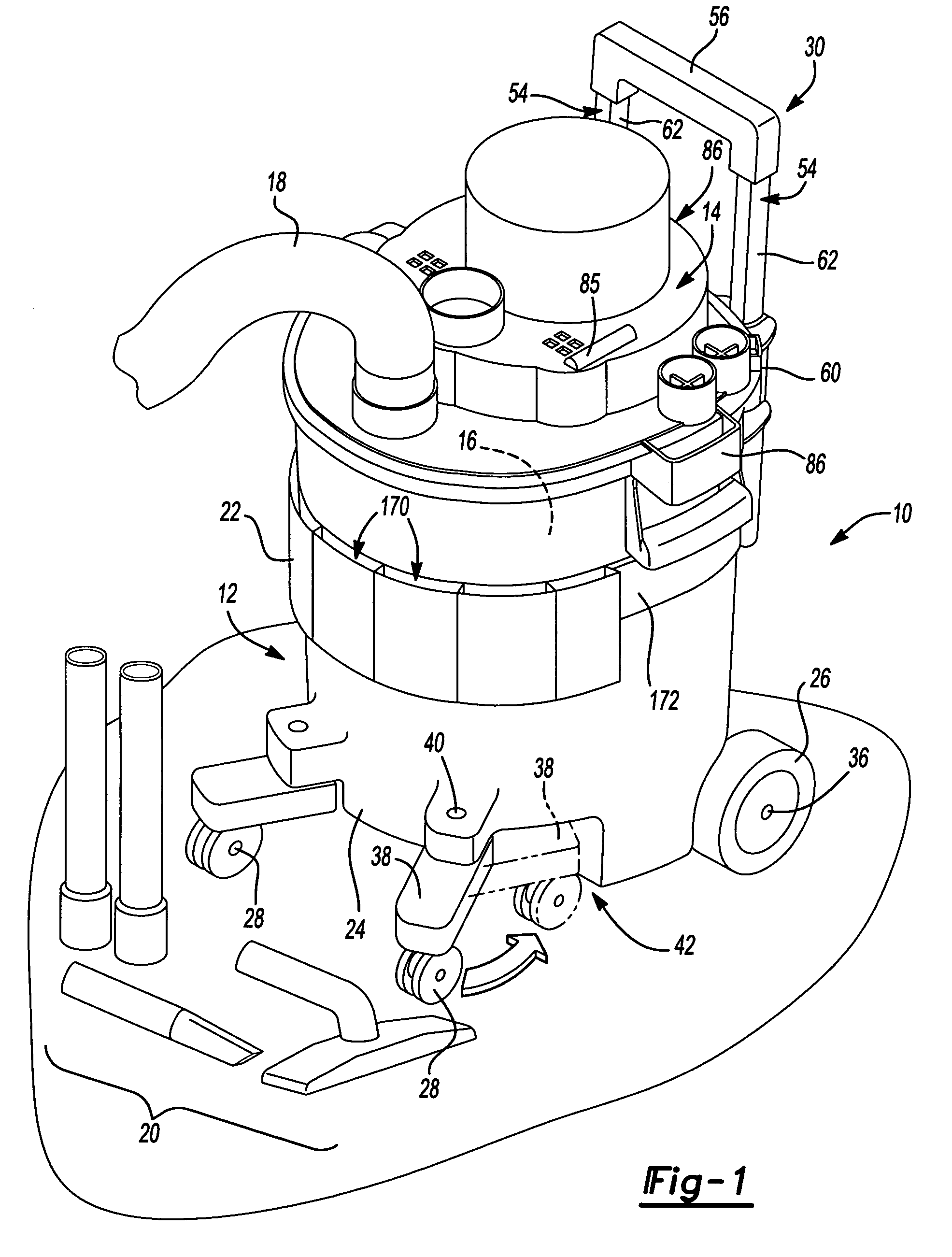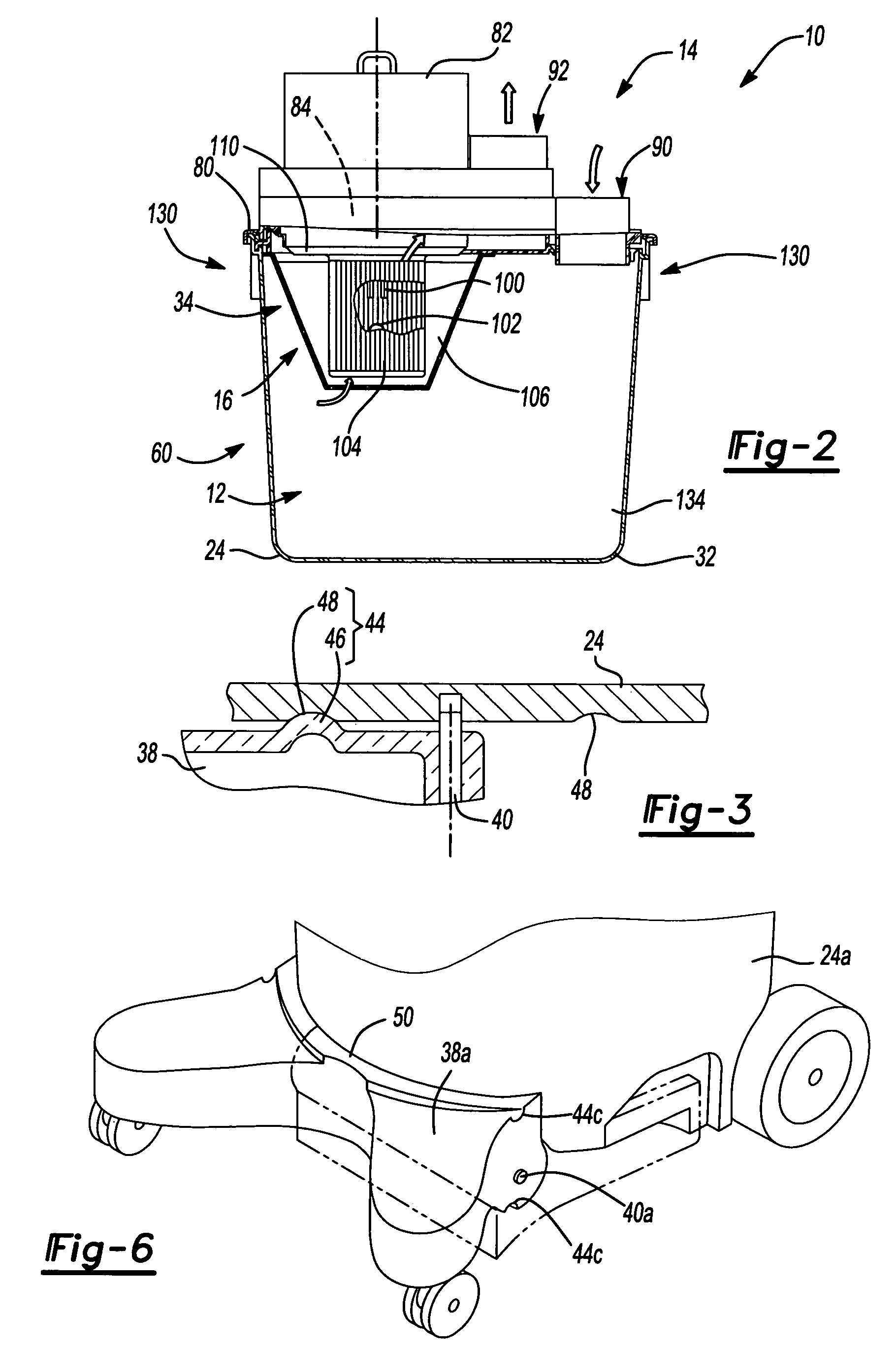Utility vacuum
a vacuum and utility technology, applied in the field of vacuums, can solve the problems of the common storage or holding of dirt and debris by the vacuum, the emptying of the dirt cavity, and the tendency of dirt and debris to adhere to the sides of the housing, etc., to achieve convenient storage, small footprint, and stable operation.
- Summary
- Abstract
- Description
- Claims
- Application Information
AI Technical Summary
Benefits of technology
Problems solved by technology
Method used
Image
Examples
Embodiment Construction
[0036]With reference to FIG. 1 of the drawings, a hand-portable wet / dry vacuum constructed in accordance with the teachings of the present invention is generally indicated by reference numeral 10. The vacuum 10 is shown to include a canister assembly 12, a powerhead assembly 14, a filter system 16, a hose assembly 18, a plurality of conventional hose-end attachments 20 and an accessory apron 22.
[0037]With additional reference to FIG. 2, the canister assembly 12 includes a canister housing 24, a first set of wheels 26, a second set of wheels 28 and a handle assembly 30. The canister housing 24 is cup or pail like in shape so as to define a central cavity 32 with a generally open top 34.
[0038]In the example illustrated, an axle 36 is employed to couple the first set of wheels 26 to the canister housing 24. More specifically, the axle 36 extends through and is rotatably supported by a portion of the canister housing 24 and the first wheels 26 are coupled to the opposite ends of the axl...
PUM
| Property | Measurement | Unit |
|---|---|---|
| angle | aaaaa | aaaaa |
| vacuum | aaaaa | aaaaa |
| area | aaaaa | aaaaa |
Abstract
Description
Claims
Application Information
 Login to View More
Login to View More - R&D
- Intellectual Property
- Life Sciences
- Materials
- Tech Scout
- Unparalleled Data Quality
- Higher Quality Content
- 60% Fewer Hallucinations
Browse by: Latest US Patents, China's latest patents, Technical Efficacy Thesaurus, Application Domain, Technology Topic, Popular Technical Reports.
© 2025 PatSnap. All rights reserved.Legal|Privacy policy|Modern Slavery Act Transparency Statement|Sitemap|About US| Contact US: help@patsnap.com



